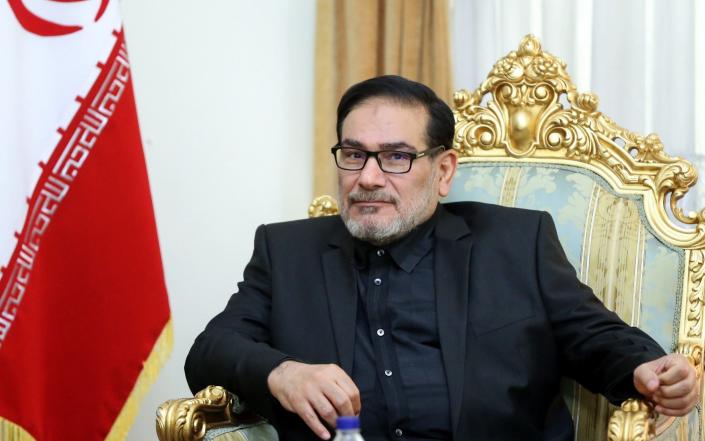
Iran has replaced a leading security chief after he was implicated in an alleged MI6 operation that passed top secret data about the regime’s nuclear programme to Israel.
On Monday, Iran’s president said he was replacing Ali Shamkhani, the secretary of the supreme national security council, with a top member of the Revolutionary Guard. Mr Shamkhani had earlier resigned from the role according to state media reports.
According to US and Iranian media reports, Mr Shamkhani was an ally of Alireza Akbari, the British-Iranian politician who was executed by the regime in January on charges of spying for MI6 on its nuclear programme.
In an audio recording obtained by BBC Persian, Mr Akbari can be heard saying that he gained high-level intelligence from Mr Shamkhani by offering him perfume and a shirt.
A recent New York Times report also stated that Mr Akbari had been passing on such information to Britain, which then allegedly handed it to Israel, including sensitive data on Iranian nuclear sites.
An escalating ‘shadow war’
Mr Akbari is said to have also revealed the identity and activities of more than 100 Iranian officials, including Mohsen Fakhrizadeh, Iran’s chief nuclear scientist, who was later assassinated by Israel.
Israel regards Iran’s nuclear programme as an existential threat and in recent years has ramped up attacks on Iranian nuclear scientists and infrastructure as part of an escalating “shadow war” with the regime.
While Britain has not acknowledged claims that Mr Akbari was an MI6 spy, the replacement of Mr Shamkhani suggests that a major breach of Iranian national security occurred, in a significant blow to the regime.
It also suggests that MI6 managed to obtain secret data on Iran’s nuclear activities which had until then eluded other Western spy networks.
Mr Akbari’s relatives have previously dismissed suggestions he was a spy and said he was the victim of a “political game” in Iran. It was reported before his execution that he was extensively tortured before confessing to being a spy.
Mr Shamkhani’s replacement was named as Ali Akbar Ahmadian, a former head of the Islamic Revolutionary Guard Corp’s strategic centre. He is also a former naval commander and sits on the powerful expediency council, which advises the Iranian supreme leader.
Meanwhile on Monday Israel accused Iran of converting ships into armed “floating terror bases” that could be used to attack trade routes.
Speaking at a security conference in Israel, Yoav Gallant, the defence minister, said the regime was fitting drones, missile systems and intelligence equipment onto commercial ships in the Gulf.
“The floating terror bases are an extension of Iran’s ongoing maritime terrorism, as seen in its actions in the Persian Gulf and Arabian Sea. Iran aims to expand its reach to the Indian Ocean, the Red Sea and even the shores of the Mediterranean,” Mr Gallant told the Herzliya Conference.
“This is a structured plan designed to threaten trade and flight routes – both military and civilian – and to create a permanent threat in the maritime arena,” he added.
Vessels with links to Israel
The regime is suspected of launching a string of attacks on ships in the Gulf region over the past few years, most notably a drone attack on the Mercer Street vessel in 2021 which killed a British sailor and a Romanian captain. Tehran denied responsibility for the incident at the time. Several other recent attacks have targeted vessels with commercial or indirect links to Israel.
Benjamin Netanyahu, the Israeli prime minister, has threatened military action against Iran’s nuclear programme unless it grinds to a halt, whereas Tehran repeatedly insists it is not making nuclear weapons.
However, UN atomic inspectors recently found uranium enriched at 84 per cent at Iranian nuclear sites, which is just short of the threshold for a bomb.
It is not the first time Iran has been accused of converting ships for military purposes. Satellite imagery published in January by H I Sutton, an open source security analyst, suggested that Iran’s navy is converting merchant vessels into drone aircraft carriers.
Two years ago, in January 2021, Iran unveiled a warship named the Makran which had been converted from a former oil tanker, which also appeared to have drone launch capabilities.
It is not the first time Iran has been accused of converting ships for military purposes. Satellite imagery published in January by H I Sutton, an open source security analyst, suggested that Iran’s navy was converting merchant vessels into drone aircraft carriers.
In January 2021 Iran unveiled a warship named the Makran, converted from a former oil tanker, which also appeared to have drone launch capabilities.

